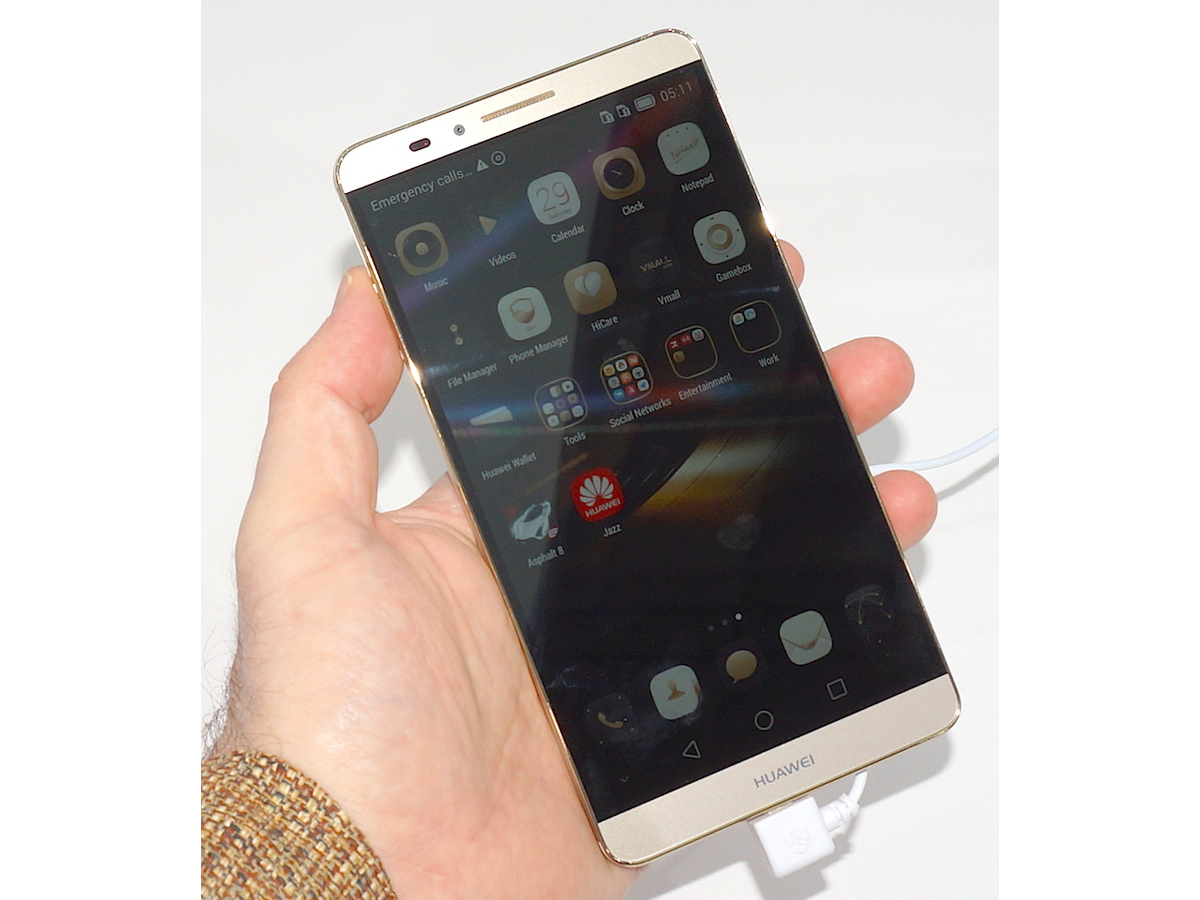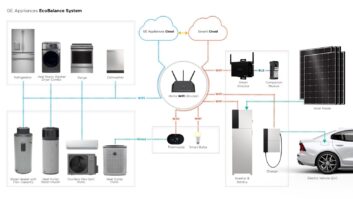
Berlin — Huawei continues to build spec-spectacular smartphones that will, at least temporarily, frustratingly fail to reach U.S. consumers.
Here at IFA, the Chinese phone maker unleashed another impressive power-efficient flagship, Ascend Mate7, confusingly named — it’s got a 6-inch screen and five numerals past the device it updates, the Ascend Mate2, which was unveiled earlier this year at International CES.
But the Mate7 is destined for more than 30 countries and territories in Asia and Europe by the end of this month, “with other markets to follow.” TWICE was unable to pin down executives on a U.S. availability date; however, the Mate2 had been available at AT&T and T-Mobile for a $299 subsidized price, but neither carrier is currently listing the device.
Also unveiled at IFA is a limited edition version of the earlier-announced Ascend P7 with a scratch-resistant sapphire screen and ceramic battery cover. Also unfortunately, the P7 will be sold only in China, with no current plans to bring it to other markets.
The Ascend Mate7 is equipped with a 4,100 mAh battery (although the spec sheet adds “4,000 mAh rated”), the largest capacity in the market and slightly more capacious than the Mate2’s 4050 mAh cell.
Inside the Mate7 is an octa-core processor – four A15 1.8 GHz and four small A7 1.3 GHz chipsets, each activated in different configurations depending on power needs. For instance, the company says Mate7 can save up to 50 percent of power usage by automatically using smaller A7 cores to power apps that consumers use at least 80 percent of the time, then kicking in the more powerful and power-hungry A15 cores for high-performance use, such as for gaming. With these processing efficiencies, Huawei claims the Mate7 will run for up to two days of normal usage.
Huawei also adds a single-touch fingerprint scanner on the rear of the Mate7. The square 9.16mm by 9.16mm sensor reads the entire fingerprint at one time, similar to how the fingerprint reader on the iPhone 5s operates, rather than the slot scanner on the Samsung Galaxy S5 over which you slide a finger, often necessitating multiple slides. Perhaps more importantly, five sets of fingerprints can be stored, and each can be allocated to normal and guest modes — if a guest switches modes, they can’t access private folders, apps or payment information.
The 95 percent metal Mate7 is constructed of an aluminum alloy to cut down on heat, is equipped with a FullHD 1,920 by 1,080 6-inch IPS LCD screen with 368 ppi and a 1,500:1 contrast ratio; a f2.0 13-megapixel fourth-generation Sony BSI rear camera and a 5-megapixel front imager; and is LTE Advanced compatible.
The slim phone measures just 6.18 by 3.19 by 0.31 inches (7.9mm thin) and weighs 6.53 ounces (185 grams), which makes it thinner and only slightly heavier than the 5.5-inch LG G3 (8.9mm, 149 grams) and the 5.7-inch Samsung Galaxy Note 4 (8.5mm, 176 grams).
Mate7 will be available in three suddenly de rigueur colors, black, silver and gold. Perhaps prettier than the Mate7’s luxurious exterior is Huawei’s EMUI 3.0 interface, which elegantly re-shapes and re-colors Android’s icons and re-configures call, contact and messaging so they can be easily toggled through with a single horizontal swipe.
Two versions of the Mate7 will be released: a 2GB RAM/16GB ROM version carries a recommended 499 euro price, while the 3GB RAM/32GB ROM) edition will sell for 599 euros.
For the less financially endowed, Huawei also announced the Ascend G7, a 5.5-inch smartphone, which will be available for 299 euros in Western and Eastern Europe, Scandinavia, South Africa and Mexico this month, again, “with other markets to follow.”
Also sporting the company’s EMUI 3.0 interface, the LTE Ascend G7 is equipped with an HD 1,280 by 720 pixel display and a 3,000 mAh battery for 1.2 days of normal usage, a 28mm wider-angle 13-megapixel rear-facing camera, and a 5-megapixel front-facing camera with an 88-degree wide-angle lens, and is thinner (7.6mm) but slightly heavier (165 grams) than the 5.5-inch LG G3. It comes in slight variations of the same three colors as the Mate7.













